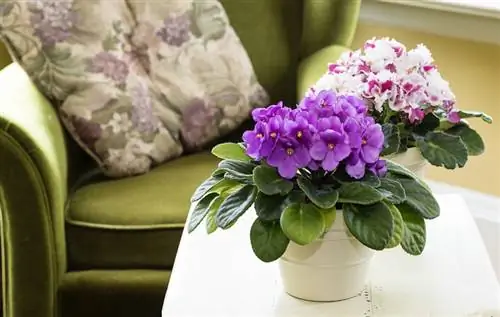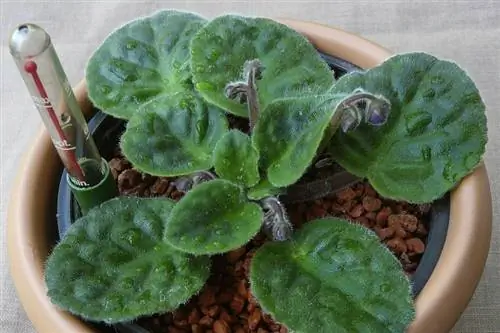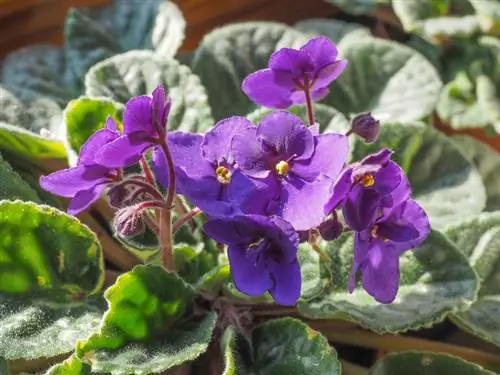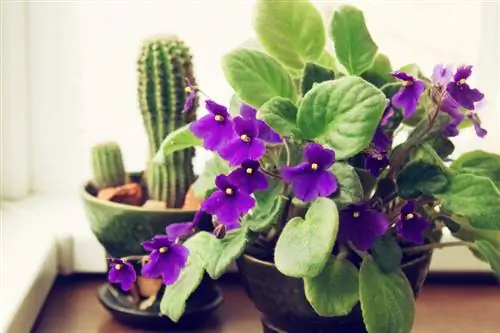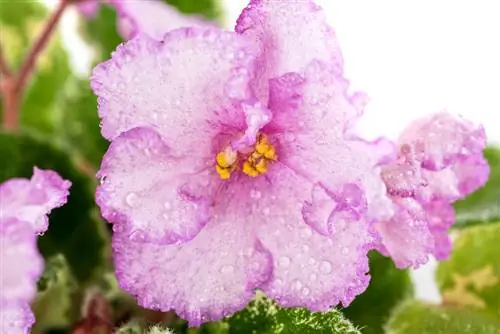- Author admin [email protected].
- Public 2023-12-16 16:46.
- Last modified 2025-01-23 11:20.
African violets are popular as houseplants primarily because of their colorful flowers. They can bloom all year round. But if the care is not right, they quickly become offended and die. Which care procedures are crucial?
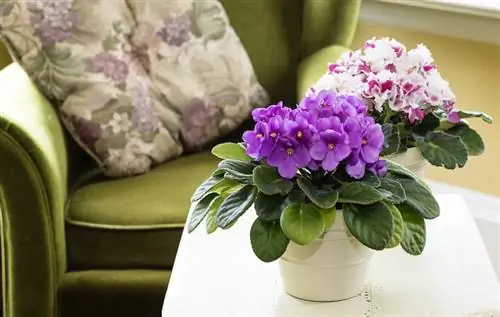
How do I properly care for my African violets?
African violet care includes continuous moisture, low-lime irrigation water, regular fertilizing with complete fertilizer, removing wilted parts of the plant, repotting if necessary and pest control. They thrive optimally at a cozy, warm temperature and indirect light.
How should African violets be watered?
African violets love to stay warm and cozy all the time. But in addition to warmth, they also need moisture. If they are in a heated living room, they need to be watered more often than in the kitchen or bathroom.
Here are the most important tips for watering:
- Keep soil slightly moist
- The top layer of soil must be dry before the next watering
- do not water the leaves
- Use 20 °C warm water
- Use low-lime water (e.g. rainwater or stale tap water)
Do African violets need fertilizer or can they tolerate nutrient deficiencies?
If you want to keep your African violets blooming all year round, you should provide them with regular nutrients. In the first month after planting, fertilizer in the potting soil is sufficient. Later, the African violets should be fertilized every 2 weeks. Fertilizer should be applied no more than once a week. It's better to fertilize too little than too much.
Here are further important tips on fertilizing African violets:
- Use complete fertilizer
- Fertilizer in liquid form (€8.00 on Amazon) or choose stick form
- fertilize especially between March and September
- Do not apply fertilizer to the leaves
Do African violets need to be trimmed?
African violets do not need pruning. You should only regularly remove the wilted and dried leaves and flowers as soon as you notice them. This greatly reduces the risk of rot. The withered plant parts are not cut off. They should be torn off with a powerful jerk.
How and how often should they be repotted?
The care continues with repotting if the African violets get too crowded. The pot should be slightly larger than the previous one. At the same time, the plants receive a fresh substrate. Also note:
- ideal time: spring
- only repot when roots are completely rooted
- Choose a pot with drainage holes
- insert loose substrate
- Leave a molding edge
Which pests make their lives difficult?
African violets are considered susceptible to pests if not cared for properly. Mealybugs, mealybugs, aphids, spider mites and leafworms can make life difficult for them. You can remove the lice, for example, by spraying them with a solution of soap and water or wiping them with a cotton pad soaked in alcohol.
Which diseases can be dangerous?
Root rot and mosaic disease in particular can affect African violets. The cause of root rot is a substrate that is too wet. The mosaic disease can be recognized by leaves that are light green to yellow. The main cause is care errors such as water that is too cold and direct sunlight. Attention: You should not propagate diseased African violets!
Tips & Tricks
If the African violets have become too large over time, you should divide them carefully. This gives them a new growth spurt.

